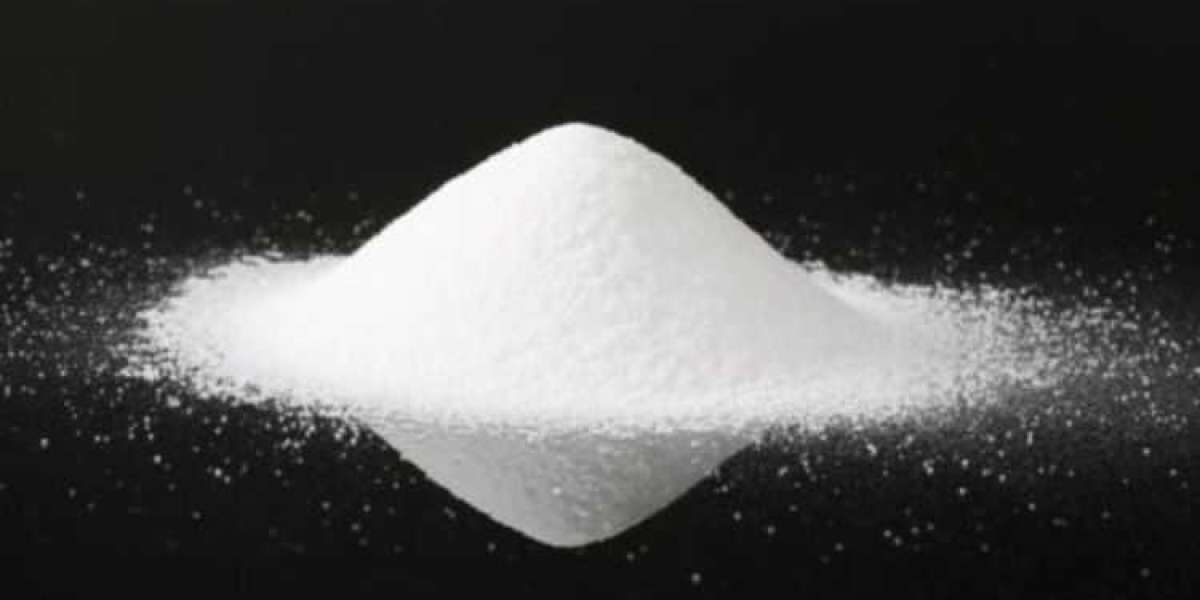Carbomer is a synthetic polymer that is widely used in the pharmaceutical industry as a thickening agent, stabilizer, and rheology modifier. Carbomer has the ability to form gels and viscous solutions with water and other solvents, and can also interact with other ingredients to enhance their performance and delivery. Carbomer is an essential component of many pharmaceutical formulations, such as topical, oral, ophthalmic, nasal, and other products. According to a recent report, the global carbomer market size reached a value of more than USD 906.02 million in 2023. The industry is further expected to grow at a CAGR of 6.54% in the forecast period of 2024-2032 to reach a value of above USD 1,603.13 million by 2032. In this blog post, we will explore the applications and benefits of carbomer in the pharmaceutical industry in detail.
Overview of Carbomer in Pharmaceutical Formulations
Carbomer is a generic name for a family of polymers derived from acrylic acid. Carbomer has a unique structure that consists of long chains of repeating units, each containing a carboxylic acid group. The carboxylic acid groups can ionize in water and form cross-links with each other or with other molecules, resulting in a three-dimensional network of gel-like structures. The degree of cross-linking, the molecular weight, and the type of solvent determine the properties of carbomer, such as its viscosity, clarity, and responsiveness to pH and temperature changes.
Carbomer is used as a thickening agent in pharmaceutical formulations because it can increase the viscosity and consistency of solutions and gels without affecting their solubility or compatibility. Carbomer can also act as a stabilizer and prevent the separation or sedimentation of insoluble or dispersed ingredients. Moreover, carbomer can modify the rheology of pharmaceutical formulations, which means it can influence how they flow and deform under stress. Carbomer can create formulations that have pseudoplastic or shear-thinning behavior, which means they become less viscous when stirred or applied, and more viscous when left undisturbed. This property is desirable for products that need to be easily spreadable and adherent on the skin or mucous membranes.
Carbomer in Topical Formulations
Topical formulations are products that are applied to the skin or mucous membranes for local or systemic effects. Examples of topical formulations include gels, creams, ointments, lotions, patches, and sprays. Carbomer is one of the most commonly used thickeners and rheology modifiers in topical formulations, especially in gels and creams. Carbomer can provide the following benefits for topical formulations:
- It can enhance the stability and homogeneity of topical formulations by preventing the phase separation or aggregation of active ingredients and excipients.
- It can improve the spreadability and applicability of topical formulations by creating a smooth and uniform texture and reducing the stickiness and greasiness.
- It can increase the retention and contact time of topical formulations on the skin or mucous membranes by forming a thin and flexible film that resists washing or rubbing off.
- It can control the release and penetration of active ingredients into the skin or mucous membranes by creating a diffusion barrier and modulating the hydration and swelling of the gel network.
- It can enhance the efficacy and safety of topical formulations by reducing the irritation and inflammation caused by some active ingredients or solvents.
Carbomer in Oral Formulations
Oral formulations are products that are taken by mouth for systemic or local effects. Examples of oral formulations include tablets, capsules, suspensions, syrups, and chewable tablets. Carbomer is used as a thickening agent and controlled-release agent in oral formulations, especially in suspensions and chewable tablets. Carbomer can provide the following benefits for oral formulations:
- It can enhance the stability and uniformity of oral suspensions by preventing the settling or caking of insoluble or poorly soluble ingredients.
- It can improve the palatability and acceptability of oral suspensions by creating a smooth and viscous texture and masking the unpleasant taste or odor of some ingredients.
- It can provide controlled release of active ingredients in oral formulations by forming a gel matrix that swells and erodes in the gastrointestinal tract, depending on the pH and enzymes.
- It can increase the bioavailability and absorption of active ingredients in oral formulations by prolonging the gastric residence time and enhancing the solubility and permeability of some ingredients.
- It can reduce the side effects and toxicity of oral formulations by minimizing the variability and fluctuations of the plasma concentration and reducing the irritation and damage to the gastrointestinal mucosa.
Carbomer in Ophthalmic Formulations
Ophthalmic formulations are products that are applied to the eyes for local or systemic effects. Examples of ophthalmic formulations include eye drops, eye gels, eye ointments, and contact lens solutions. Carbomer is used as a thickening agent and lubricant in ophthalmic formulations, especially in eye drops and gels. Carbomer can provide the following benefits for ophthalmic formulations:
- It can enhance the stability and clarity of ophthalmic formulations by preventing the precipitation or degradation of active ingredients and excipients.
- It can improve the comfort and convenience of ophthalmic formulations by creating a non-irritating and non-blurring texture and reducing the frequency and volume of administration.
- It can provide long-lasting lubrication and hydration of the eyes by forming a mucoadhesive and elastic film that mimics the natural tear film and resists the tear drainage.
- It can improve the ocular drug delivery and bioavailability of active ingredients by increasing the contact time and residence time of the formulation on the eye surface and enhancing the penetration and permeation of some ingredients.
- It can enhance the efficacy and safety of ophthalmic formulations by reducing the bacterial contamination and infection and protecting the eye surface from external insults and injuries.
Carbomer in Nasal Formulations
Nasal formulations are products that are administered through the nose for local or systemic effects. Examples of nasal formulations include nasal sprays, nasal drops, nasal gels, and nasal powders. Carbomer is used as a thickening agent and mucoadhesive agent in nasal formulations, especially in nasal sprays and gels. Carbomer can provide the following benefits for nasal formulations:
- It can enhance the stability and homogeneity of nasal formulations by preventing the phase separation or aggregation of active ingredients and excipients.
- It can improve the sprayability and applicability of nasal formulations by creating a fine and uniform droplet size and reducing the dripping and run-off.
- It can provide viscosity and mucoadhesive properties for nasal formulations by forming a gel network that adheres to the nasal mucosa and resists the mucociliary clearance.
- It can improve the nasal drug delivery and bioavailability of active ingredients by increasing the contact area and retention time of the formulation in the nasal cavity and enhancing the absorption and transport of some ingredients.
- It can enhance the efficacy and safety of nasal formulations by reducing the systemic absorption and side effects of some ingredients and protecting the nasal mucosa from irritation and inflammation.
Carbomer in Other Pharmaceutical Applications
Carbomer is also used in other pharmaceutical applications, such as wound care products, dental formulations, and vaginal formulations. Carbomer can provide the following benefits for these applications:
- It can enhance the wound healing and infection control by forming a moist and protective gel layer that promotes the granulation and epithelialization of the wound and prevents the bacterial colonization and biofilm formation.
- It can improve the dental hygiene and oral health by forming a mucoadhesive and sustained-release gel that delivers the active ingredients to the teeth and gums and prevents the plaque formation and dental caries.
- It can provide vaginal lubrication and contraception by forming a viscous and cohesive gel that reduces the friction and irritation during intercourse and inhibits the sperm motility and viability.
Future Trends and Innovations
Carbomer is a versatile and valuable polymer that has a wide range of applications and benefits in the pharmaceutical industry. However, there are still some challenges and limitations that need to be overcome, such as the variability and sensitivity of carbomer to the environmental conditions, the difficulty and cost of the manufacturing and quality control of carbomer, and the potential interactions and incompatibilities of carbomer with some ingredients and devices. Therefore, there are some emerging trends and innovations that aim to improve the performance and functionality of carbomer, such as:
- The development of novel carbomer derivatives and copolymers that have improved properties and functionalities, such as higher viscosity, lower toxicity, better biodegradability, and enhanced responsiveness to stimuli.
- The optimization of the formulation and processing of carbomer that can enhance the stability, solubility, and compatibility of carbomer, such as the use of novel solvents, additives, and techniques.
- The integration of carbomer with other materials and technologies that can provide synergistic and multifunctional effects, such as the use of nanomaterials, bioactive agents, and smart devices.
These trends and innovations can open up new opportunities and possibilities for the use of carbomer in the pharmaceutical industry and beyond.



